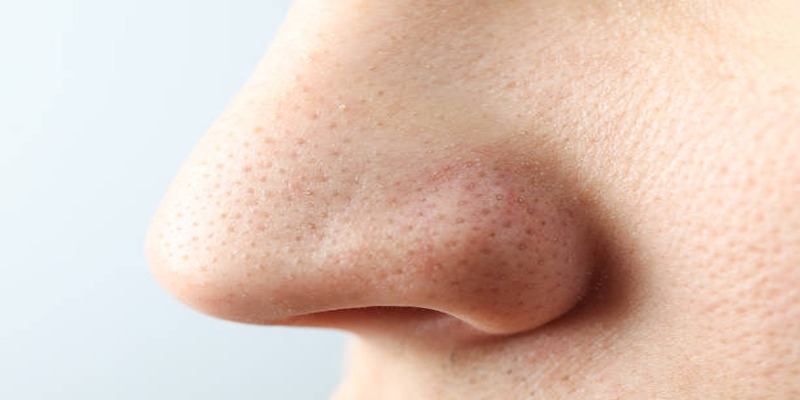Understanding the difference between sebaceous filaments and blackheads is crucial for proper skincare. Sebaceous filaments are tiny formations naturally occurring in the skin to help channel the flow of sebum, or oil. Found mostly on the nose and chin, they often appear as small, gray or light-colored dots. Blackheads, on the other hand, are a type of acne caused by clogged pores filled with excess oil and dead skin cells, turning dark due to oxidation. While they might look similar, they require different care approaches. Knowing how to identify each can lead to healthier, clearer skin and more effective skincare routines.
What Are Sebaceous Filaments?

Sebaceous filaments also called as oil glands are anomalies observed on the skin surface. They are follicles for sebum to flow from the sebaceous gland to the outer layer of the skin. Sebum is oil that helps to prevent skin from drying or becoming damaged in any way that might be hazardous to the body. Healthy sebaceous filaments are another mechanism by which the complexion is maintained healthy; they allow skin to avoid dryness and itching. However, when the oil production increases or the dead skin cells form a plug in these channels, these become more pronounced and causes enlarged pores, and blackheads.
Appearance and common areas on the face
Sebaceous filaments are usually small but have the appearance of tiny dots or lines on the skin. Usually infections are gray or lighter hue and they may be a little elevated from the skin. Sebaceous filaments can be observed in the most frequently affected zones such as the nose, chin and the forehead. They usually bear a lot of sebaceous glands whose function it is to secrete oil and because of their nature they clog easily.
How to care for sebaceous filaments
It's important not to confuse sebaceous filaments with blackheads. Sebaceous filaments do not require removal as they serve a natural function in the skin. However, if you want to minimize their appearance or prevent clogging, there are a few steps you can take:
- Gentle exfoliation: Regularly exfoliating with a mild scrub or chemical exfoliant can help remove excess oil and dead skin cells, preventing them from clogging the pores.
- Oil control: Using products specifically designed to control oil production, such as toners or serums, can help keep sebaceous filaments in check.
- Avoid pore-clogging products: Certain skincare and makeup products can contribute to clogged pores. Look for non-comedogenic options that won't block your pores.
What Are Blackheads?
Blackheads are a type of acne caused by the build-up of excess oil and dead skin cells in the pores. When the pores become clogged, they can appear as small black dots on the surface of the skin.
Appearance and common areas on the face
Blackheads are often larger and more noticeable than sebaceous filaments. They have a dark or black appearance due to oxidation from exposure to air. Blackheads typically occur in areas where there is a higher concentration of oil glands, such as the nose, chin, forehead, and cheeks.
How to care for blackheads
Proper skincare routine is crucial when it comes to managing and preventing blackheads. Here are some tips:
- Cleanse regularly: Cleansing your face twice daily with a gentle cleanser helps eliminate excess oil and dead skin cells that can lead to blackheads.
- Use topical treatments: Products with salicylic acid or benzoyl peroxide can help clear pores and minimize blackheads.
- Don't pick or squeeze them: While it might be tempting, picking or squeezing blackheads can cause scarring and irritation. Leave it to a professional if you want them removed.
Differences Between Sebaceous Filaments and Blackheads

Aside from their physical appearance, there are a few key differences between sebaceous filaments and blackheads that can help you distinguish between the two:
- Cause: Sebaceous filaments are a natural occurrence in the skin, while blackheads are a type of acne.
- Color: Sebaceous filaments are typically gray or light in color, while blackheads have a dark or black appearance.
- Clogging: Sebaceous filaments do not necessarily cause clogged pores, while blackheads are caused by clogged pores.
- Treatment: Sebaceous filaments do not require removal, while proper skincare routine is necessary to manage and prevent blackheads.
Understanding the difference between sebaceous filaments and blackheads is essential for maintaining healthy skin. By incorporating proper skincare practices, you can minimize their appearance and keep your skin looking clear and radiant.
Skin Care Tips for Managing Each
Here are some general skincare tips for managing sebaceous filaments and blackheads:
For Sebaceous Filaments:
- Be gentle: Avoid harsh cleansers or exfoliants that can strip the skin of its natural oils and irritate sebaceous filaments.
- Moisturize: When the skin is well-hydrated, it produces less oil, making it less likely for sebaceous filaments to become visible.
- Use clay masks: Clay masks are known for their ability to absorb excess oil from the skin. Use them once a week to help keep your pores clean and minimize the appearance of sebaceous filaments.
For Blackheads:
- Avoid touching your face: Touching your face can transfer bacteria and oil onto the skin, contributing to clogged pores.
- Choose non-comedogenic products: Look for skincare and makeup products that won't block your pores and contribute to blackheads.
- Consult with a dermatologist: If you struggle with persistent blackheads, consult with a dermatologist who can provide personalized treatment options.
Preventative measures to minimize occurrence
While it's not possible to completely prevent sebaceous filaments or blackheads from occurring, there are some steps you can take to minimize their appearance:
- Keep a consistent skincare routine: Regularly cleansing, exfoliating, and moisturizing can help keep your pores clean and minimize the chances of clogging.
- Limit certain habits: Avoid wearing heavy makeup for extended periods or frequently touching your face.
- Stay hydrated: Drinking enough water can help keep your skin hydrated and less prone to producing excess oil.
Conclusion
Sebaceous filaments and blackheads are both common occurrences on the skin, but understanding the differences between them is essential for proper care. By incorporating these tips into your skincare routine, you can keep your pores clean and minimize their appearance for healthy and radiant skin. Remember to be gentle with your skin and consult with a dermatologist if you have persistent concerns about sebaceous filaments or blackheads.







